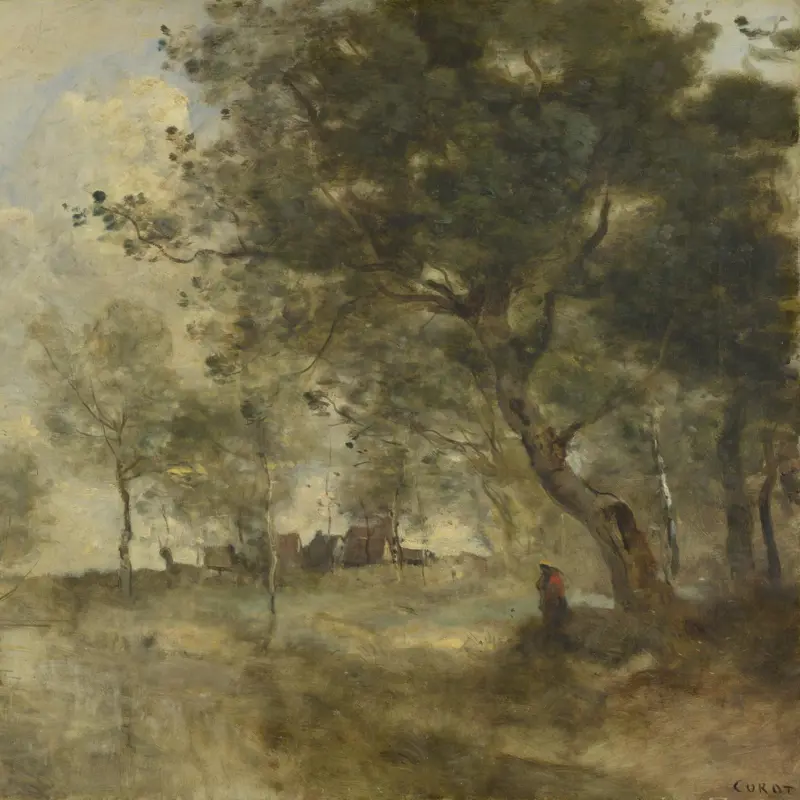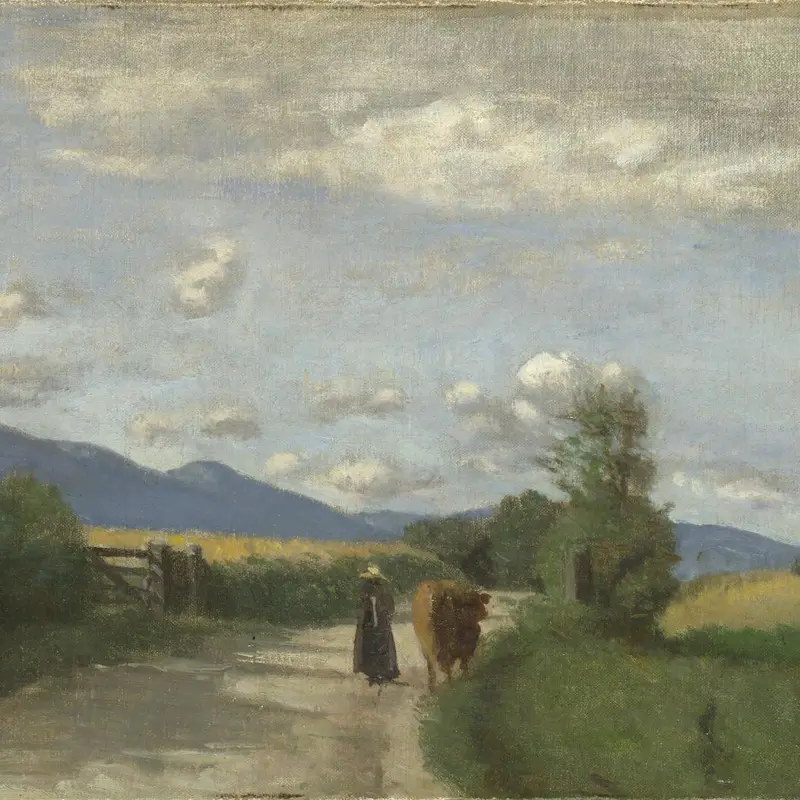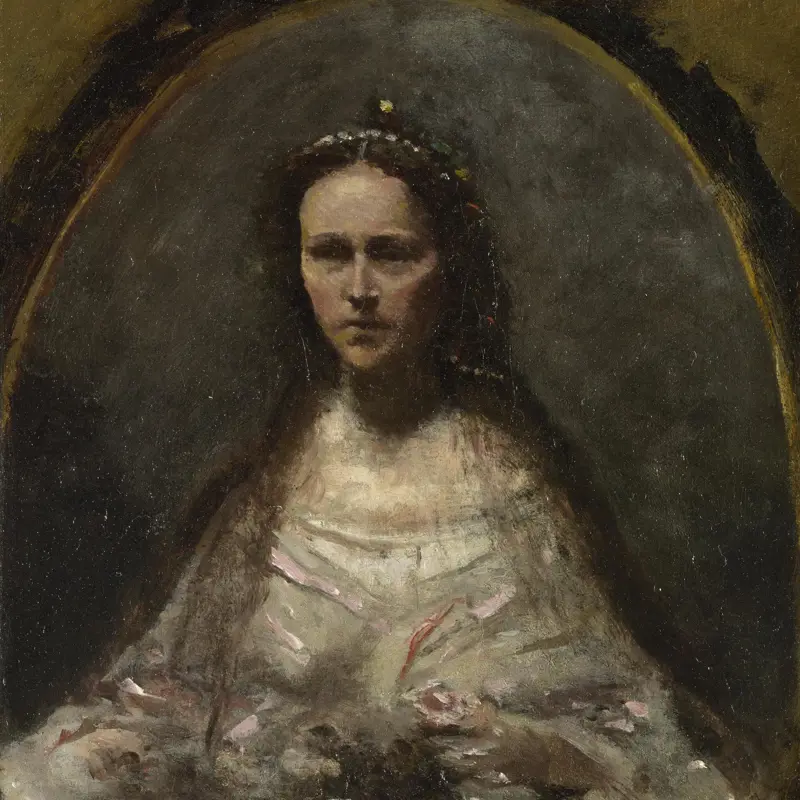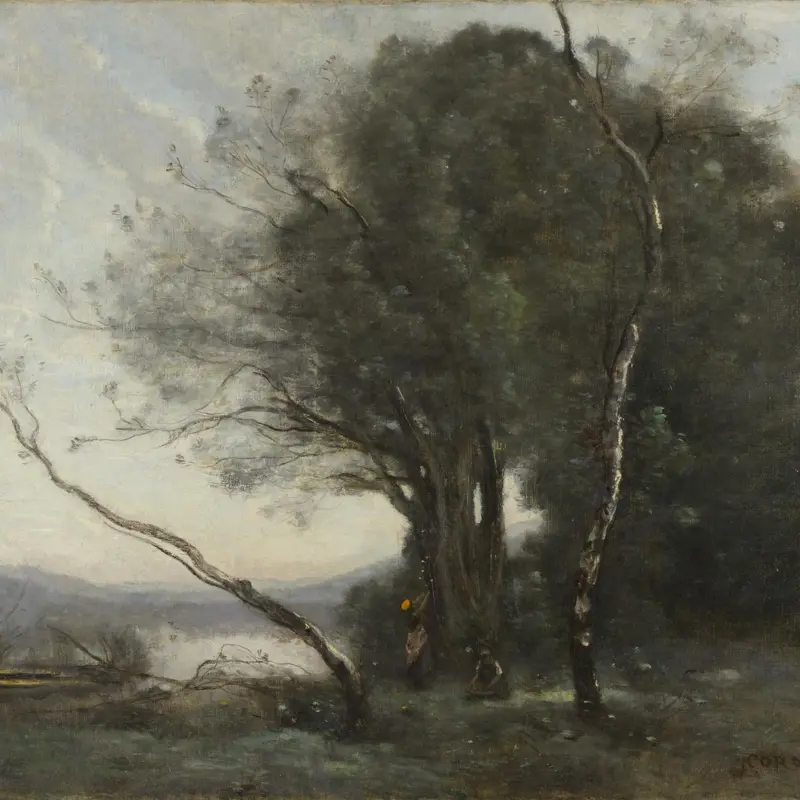Jean-Baptiste-Camille Corot, 'Monsieur Pivot on Horseback', about 1853
About the work
Overview
In this small, intimate portrait, the rider, turning to look at the viewer, seems to have been caught unawares. He is Monsieur Joseph Pivot, who was about 50 at the time and a neighbour of Corot in Ville-d’Avray. He frequently rode his horse in a nearby wood where Corot also went to paint, and one day, seeing him ride by, Corot asked him to stop so that he could make a quick sketch of him.
Remarkably, technical analysis of this painting has indeed shown that the image of the man on his horse has been painted on top of an existing landscape. The pale blue paint of the original sky is visible under the thin dark green paint at the top left of the picture. The first landscape was wider in format. Once back in the studio Corot cut down the canvas and finished off the woodland setting, adding the slender curved trunks of the silver birches over the dark green paint.
Key facts
Details
- Full title
- Monsieur Pivot on Horseback
- Artist
- Jean-Baptiste-Camille Corot
- Artist dates
- 1796 - 1875
- Date made
- about 1853
- Medium and support
- oil on canvas
- Dimensions
- 39.2 × 30.3 cm
- Inscription summary
- Signed
- Acquisition credit
- Bought, 1923
- Inventory number
- NG3816
- Location
- Not on display
- Collection
- Main Collection
Provenance
Additional information
Text extracted from the ‘Provenance’ section of the catalogue entry in Sarah Herring, ‘National Gallery Catalogues: The Nineteenth Century French Paintings’, vol. 1, ‘The Barbizon School’, London 2019; for further information, see the full catalogue entry.
Exhibition history
-
2009Corot to Monet: A Fresh Look at Landscape from the CollectionThe National Gallery (London)8 July 2009 - 20 September 2009
Bibliography
-
1905A. Robaut, L'oeuvre de Corot: Catalogue raisonné et illustré, Paris 1905
-
1930J. Meier-Graefe, Corot, Berlin 1930
-
1930C. Bernheim de Villers, Corot: Peintre de figures, Paris 1930
-
1942G. Bazin, Corot, Paris 1942
-
1946Martin Davies, National Gallery Catalogues: French School, London 1946
-
1957Martin Davies, National Gallery Catalogues: French School, 2nd edn (revised), London 1957
-
1961A.A. MacGregor, Percyval Tudor-Hart, 1873-1954: Portrait of an Artist, London 1961
-
1962
G. Bazin, Figures de Corot (exh. cat., Musée du Louvre, Paris), Paris 1962
-
1970Davies, Martin, and Cecil Gould, National Gallery Catalogues: French School: Early 19th Century, Impressionists, Post-Impressionists etc., London 1970
-
1984M. Hours, Jean-Baptiste-Camille Corot, New York 1984
-
1987G. Matheron, Corot à Ville-d'Avray (exh. cat. Musée du Ville-d'Avray, December 1987), New York 1987
-
1991J. Leighton, Corot (National Gallery Touring Exhibition) (exh. cat. Manchester City Art Gallery, 18 May - 30 June 1991; Norwich Castle Museum & Art Gallery, 6 July - 18 August 1991), Manchester 1991
-
1996
C. Heilmann, M. Clarke and J. Sillevis (eds.), Corot, Courbet und die maler von Barbizon: Les amis de la nature (exh. cat., Haus der Kunst, München), Munich 1996
-
1996C. Bouret (ed.), Corot. La Génie du trait: Estampes et dessins (exh. cat., Bibliothèque Nationale de France, Paris), Paris 1996
-
1996G. de Wallens, Corot, Paris 1996
-
1997Paris, Cabinet des Estampes, Bibliothèque Nationale, côte Yb 3, 949: A. Robaut, Documents manuscrits, 1997
-
2001
C. Baker and T. Henry, The National Gallery: Complete Illustrated Catalogue, London 2001
-
2001R. Pickvance, Corot: El Parque de los Leones en Port-Marly, 1872, Madrid 2001
-
2019Herring, Sarah, National Gallery Catalogues: The Nineteenth Century French Paintings, 1, The Barbizon School, London 2019
About this record
If you know more about this work or have spotted an error, please contact us. Please note that exhibition histories are listed from 2009 onwards. Bibliographies may not be complete; more comprehensive information is available in the National Gallery Library.




























